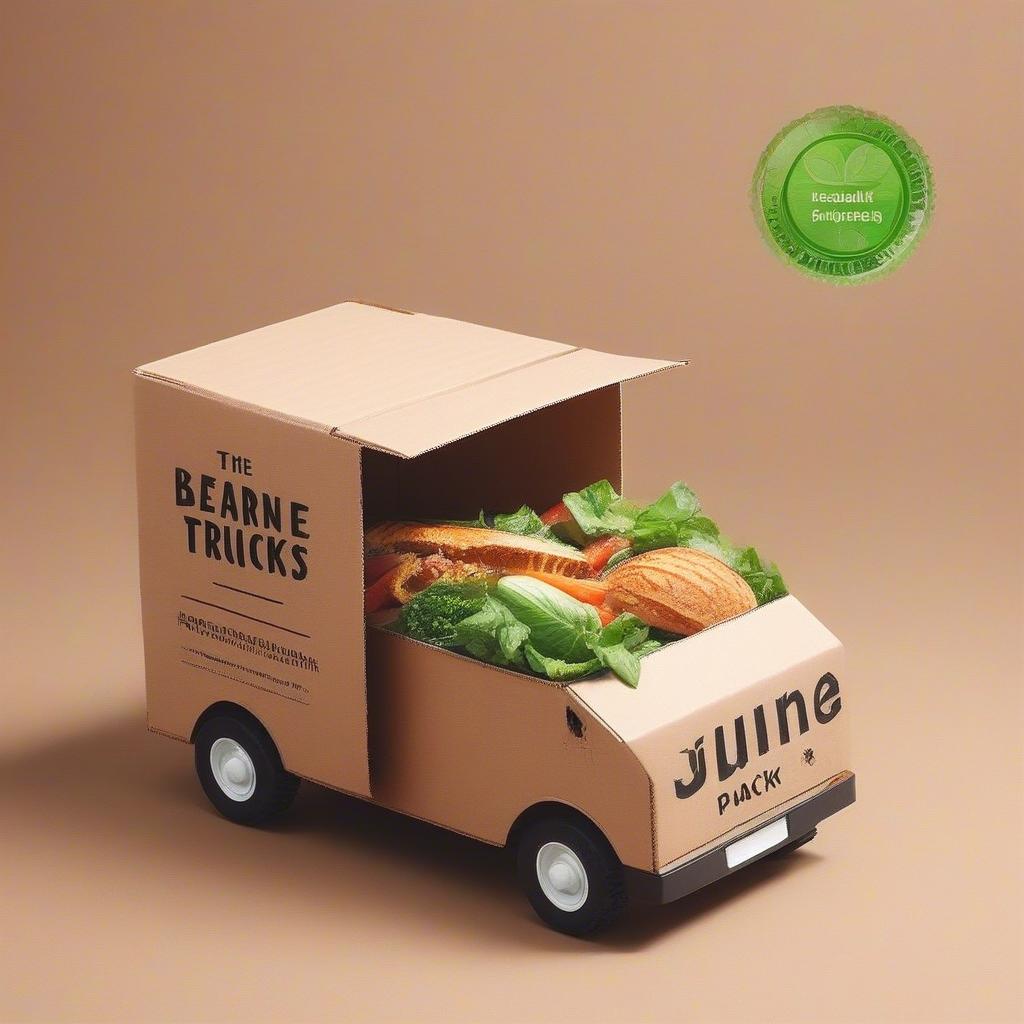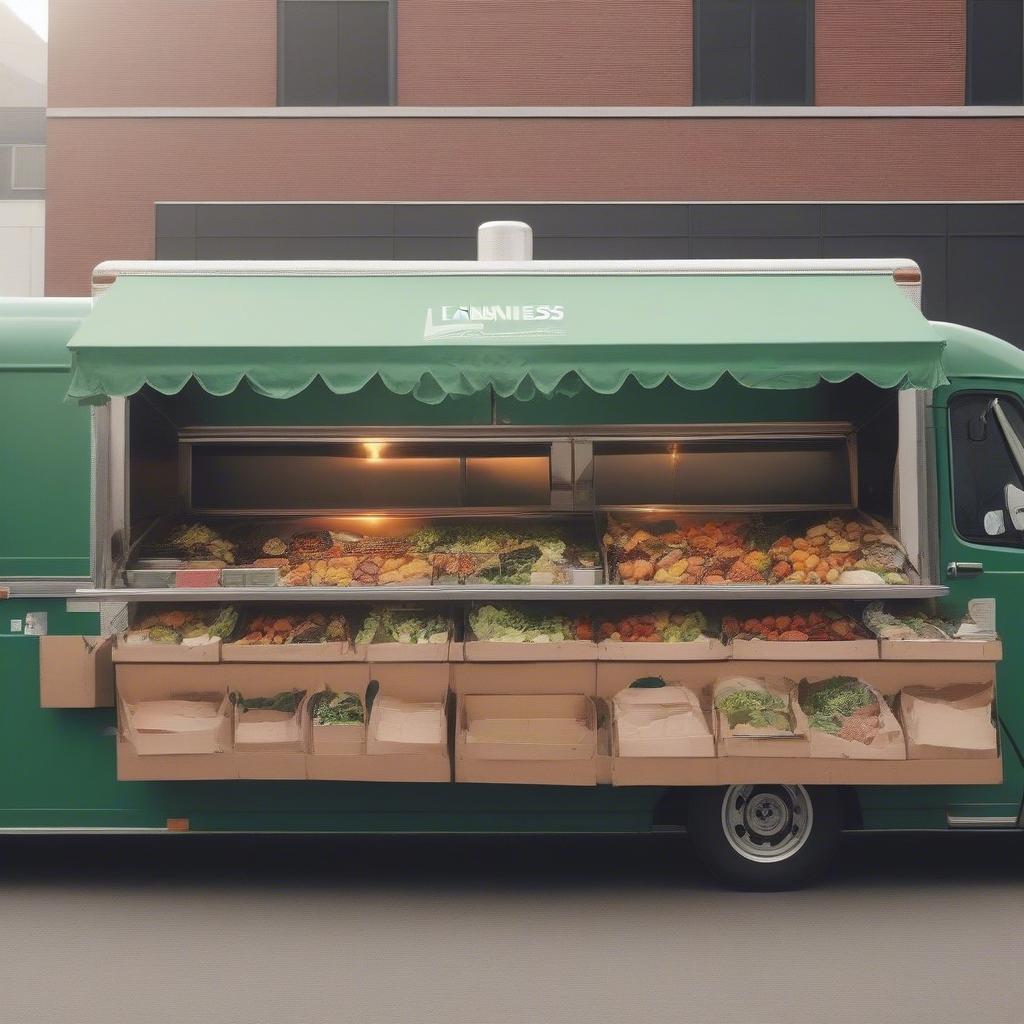
Food Truck Profit Margins: What to Expect and How to Improve
Have you ever dreamed of owning a food truck, cruising down the street, and serving up deliciousness to hungry customers? It’s a vibrant dream, full of sizzling pans and satisfied smiles. But let’s be real: the romance of the road needs to meet the reality of running a viable business. Understanding your food truck profit margins is the key to turning that dream into a thriving reality.
What Are Profit Margins, Anyway?
Before we dive deep into the nitty-gritty, let’s break down what profit margins actually mean. In simple terms, it’s the percentage of revenue you keep after covering all your expenses. It’s not just about how much money you make; it’s about how much you actually keep.
Gross Profit Margin
Think of this as your initial take. It’s your revenue minus the direct costs of making your food – your ingredients, packaging, and maybe even a little bit for that fancy spatula you love.
- Formula: (Revenue – Cost of Goods Sold) / Revenue
Net Profit Margin
This is the big kahuna. It’s what you have left over after all your costs are paid – including rent for your commissary kitchen, gas for your truck, those oh-so-necessary permits, and even marketing costs.
- Formula: (Net Income / Revenue)
Why is This Important?
Understanding your profit margins isn’t just about knowing how much you’re making. It’s about understanding the health of your business. It tells you if your pricing is right, if your expenses are under control, and if your food truck is on track for long-term success.
Typical Food Truck Profit Margins: A Reality Check
So, what can you realistically expect when it comes to food truck finances? It’s tricky because it varies wildly based on your location, cuisine, pricing, and operating efficiency. However, here’s a general ballpark:
- Average Gross Profit Margin: 60% – 80%
- Average Net Profit Margin: 10% – 20%
Don’t be discouraged if your net profit margin is on the lower end of that range, especially when starting out. The first year or two often involves fine-tuning and learning the ropes. Aiming for the higher end of the spectrum is always a good goal, but patience and perseverance are key.
Factors Affecting Your Food Truck Profitability
Many elements play a role in how much profit your food truck generates. Here are some of the most important:
Cost of Goods Sold (COGS)
This is the biggest variable. Ingredients, packaging, and drinks all contribute here.
- Food Costs: This is your biggest expense. Optimizing your menu for minimal waste and using seasonal, locally sourced ingredients can help.
- Packaging Costs: Choose packaging that is both cost-effective and functional, keeping in mind branding.
- Drink Costs: Soda, water, and other beverages need to be factored in, as does ice and cups.
Overhead Costs
These are costs you’ll incur even if you’re not on the road.
- Rent: For a commissary kitchen or food storage space.
- Permits & Licenses: These vary wildly by location, so do your research.
- Insurance: Essential for protecting your business and your truck.
- Truck Maintenance & Repairs: Keeping your truck running smoothly is crucial.
- Marketing & Advertising: Getting the word out about your truck.
- Utilities: Electricity to run appliances, gas for cooking.
- Employee Wages: If you have a team, their salaries and benefits need to be factored in.
Pricing Strategy
Finding the sweet spot between what customers will pay and what covers your costs is essential.
- Competitive Analysis: Look at what other food trucks are charging in your area.
- Value Proposition: What makes your truck unique? Is it gourmet ingredients, a convenient location, or a fun vibe?
- Menu Engineering: Design your menu to highlight high-profit items and avoid low-profit duds.
Location, Location, Location
Where you park your truck can dramatically impact sales.
- Foot Traffic: Seek out areas with lots of people, like downtowns, festivals, and sporting events.
- Competition: Consider areas with less direct competition if feasible.
- Visibility: Your location should be easily seen and accessible.
Efficiency and Operations
How well you manage the day-to-day operation can make all the difference.
- Speed of Service: Customers don’t want to wait too long for their food.
- Inventory Management: Minimize waste by buying the right amount of supplies.
- Order Taking System: Ensure efficient and accurate order processing.
Strategies to Improve Your Food Truck Profit Margins
Now that you know what affects your profits, let’s talk about how to boost them.
Optimizing Your Menu and COGS
1. Menu Engineering
- Identify Stars, Plow Horses, Puzzles, and Dogs: A common approach in menu engineering classifies menu items into four categories based on popularity and profit.
- Stars: High popularity, high profit (keep these).
- Plow Horses: High popularity, low profit (consider slight price increase or reduction in ingredient costs).
- Puzzles: Low popularity, high profit (promote these strategically, or adjust the recipe).
- Dogs: Low popularity, low profit (remove these).
- Focus on High-Margin Items: Prioritize dishes that are cost-effective to make. For example, pasta dishes or items with seasonal produce.
2. Reducing Food Waste
- Accurate Inventory Management: Order ingredients based on predicted demand and reduce over-ordering.
- Use All Parts: Try to utilize ingredients to the fullest extent, creating stocks and sauces, or having daily specials using "leftovers".
- Seasonal Menus: Take advantage of seasonal ingredients that are fresher and often less expensive.
3. Negotiate with Suppliers
- Bulk Discounts: Buy in larger quantities for staple items to lower the per-unit cost.
- Compare Prices: Shop around to find the best deals on ingredients.
- Build Relationships: Develop relationships with your suppliers to get preferential pricing or discounts.
4. Standardize Recipes
- Consistent Portioning: Ensure each dish has a consistent portion size to reduce food waste and maintain quality control.
- Precise Measurements: Use measuring cups and scales to keep ingredient costs in check.
Controlling Your Overhead Costs
1. Strategic Scheduling
- Staffing Efficiently: Don’t overstaff during slow periods.
- Cross-Training Employees: Train your staff on multiple roles so you can optimize staffing based on need.
2. Regular Maintenance
- Truck Checks: Perform routine maintenance on your truck to prevent costly repairs.
- Equipment Maintenance: Regularly clean and maintain your kitchen equipment.
3. Smart Marketing
- Targeted Campaigns: Focus on marketing channels that reach your ideal customers.
- Social Media Presence: Use free social media platforms to engage your audience and share your locations.
- Local Partnerships: Connect with local businesses for cross-promotion.
4. Reduce Utility Costs
- Energy-Efficient Appliances: Use energy-efficient appliances whenever possible.
- Turn Off Equipment: Turn off equipment when not in use.
Optimizing Your Pricing and Sales
1. Dynamic Pricing
- High-Demand Periods: Consider charging slightly higher prices during peak hours or special events.
- Promotional Offers: Use discounts or specials to attract new customers or incentivize larger purchases.
2. Upselling and Cross-Selling
- Train Staff: Train your team to upsell menu items or suggest add-ons.
- Package Deals: Offer bundled deals that provide better value for customers.
3. Loyalty Programs
- Reward Repeat Customers: Create a loyalty program that rewards repeat customers and encourages them to come back.
- Special Offers for Loyal Fans: Offer discounts or free items to loyal customers.
4. Speed and Convenience
- Efficient Ordering System: Use technology to streamline the ordering process (mobile ordering, POS systems).
- Quick Service: Train your team to serve customers efficiently.
Choosing the Right Locations
1. Research Your Area
- Analyze Demographics: Identify areas where your target customers are located.
- Study Traffic Patterns: Choose locations that have high foot traffic during peak hours.
2. Check Regulations
- Permits and Licenses: Ensure you have all the required permits and licenses to operate in your desired location.
- Parking Restrictions: Familiarize yourself with local parking regulations.
3. Evaluate Competition
- Avoid Saturation: Try to avoid areas that are saturated with similar food trucks.
- Find a Niche: Position yourself in areas where you offer a unique food experience.
Food Truck Financial Templates: Getting Organized
Managing your finances can feel overwhelming, but these simple templates can help.
1. Weekly Sales Tracker:
| Day | Revenue | COGS | Overhead | Net Profit |
|---|---|---|---|---|
| Monday | ||||
| Tuesday | ||||
| Wednesday | ||||
| Thursday | ||||
| Friday | ||||
| Saturday | ||||
| Sunday | ||||
| Total |
2. Monthly Expense Tracker
| Category | Estimated Cost | Actual Cost | Difference | Notes |
|---|---|---|---|---|
| Rent | ||||
| Permits | ||||
| Insurance | ||||
| Truck Maintenance | ||||
| Marketing | ||||
| Salaries | ||||
| Utilities | ||||
| Other | ||||
| Total |
3. Menu Item Costing Template
| Item Name | Ingredient 1 Cost | Ingredient 2 Cost | … | Total Cost | Selling Price | Gross Profit |
|---|---|---|---|---|---|---|
You can easily adapt these templates to fit your specific needs.
Learn Business: Your Partner in Food Truck Success
At Learn Business, we understand the unique challenges of running a food truck. That’s why we offer a comprehensive suite of resources designed to help you thrive. We’re not just another generic resource; we’re your dedicated partner in your entrepreneurial journey. We’ve seen it all, from the startup hustle to the strategic scaling.
How do we help? Here’s a taste:
- Customizable Templates: We provide ready-to-use templates that make managing your food truck finances a breeze. From profit & loss statements to cash flow forecasts, we’ve got you covered.
- Expert Guides: Our in-depth guides cover everything from menu engineering to marketing strategy. Get expert advice that’s tailored to the food truck industry.
- Financial Planning Tools: Manage your income and expenses efficiently with our easy-to-use financial tools. Learn how to analyze your profit margins and make informed decisions.
- Business Planning Resources: If you’re just getting started, our business planning templates guide you through creating a detailed plan to get you on the path to profitability.
- Community Support: Join our community of food truck entrepreneurs where you can share tips, ask questions, and get support from your peers.
We believe in empowering small businesses with the tools and knowledge they need to succeed. Whether you’re a seasoned food truck operator or just starting out, Learn Business is here to help you achieve your goals.
Wrapping It Up: Your Path to Food Truck Profitability
Improving your food truck profit margins isn’t a one-time fix; it’s an ongoing process. It requires attention to detail, a willingness to adapt, and a strong understanding of your numbers. By implementing these tips, creating a well-defined plan, and keeping track of your finances, you’ll be well on your way to creating a thriving and profitable food truck business. Remember, your passion for food is the spark, but savvy business practices are the fuel that will keep your wheels turning. Don’t just dream it, drive it.



Leave a Reply